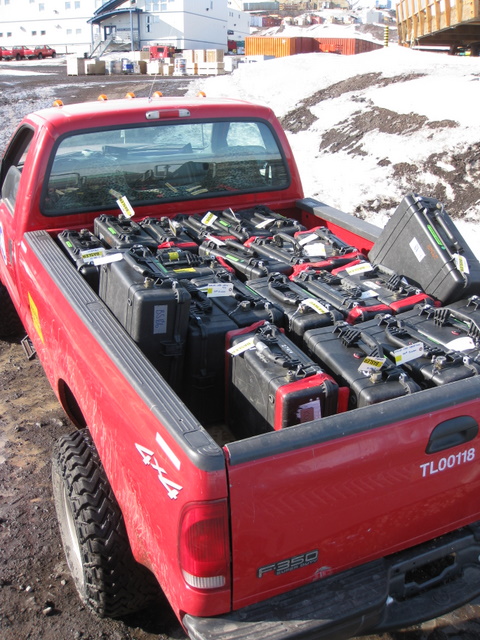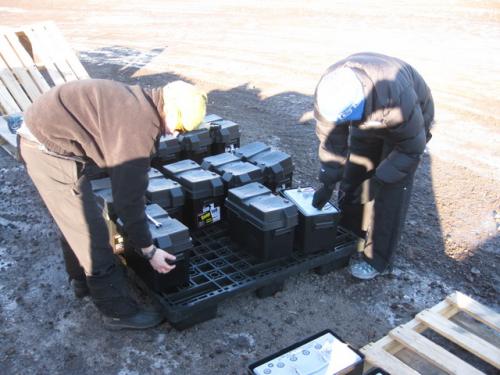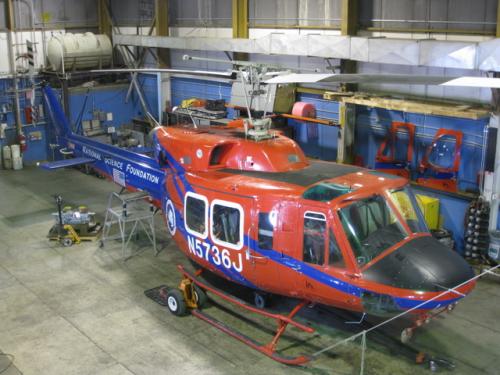In McMurdo you have to take a training class for everything. This is probably for good reason but some of the training seems a little overkill. Yesterday four of us took light vehicle training so that we are able to use the station trucks to drive around town and move our equipment without having to wait for someone to do it for us.
Mountaineers, Mike and Peter, also took a training class on how to drive a Piston Bully. We’ll use this on Sunday when we head out to a local crevasse field for training. We’ve met with the helo techs and pilots a number of times over the last 48 hours to make sure all parties involved are on the same page for landing on Byrd GlacierA mass of ice that persists for many years and notably deforms and flows under the influence of gravity..
The weather here has been really spectacular by Antarctic standards, clear skies, calm winds and relatively warm (30+ F). This is great since we’ve finally started our outdoor activities. Yesterday we spent a large part of our day tagging and moving cargo to get checked into the system for transport out to the field cache. Kristin and I will be heading out with a team on Sunday or Monday on the Basler aircraft to unload all of our equipment at the cache site. We’re taking over 10,000 pounds of cargo into the field so we’ll be making two flights. The best part is every piece of equipment has to be hand loaded and unloaded, with some single pieces weighing up to 200 pounds.

Another important task we were able to complete yesterday was unpacking 80 70-lb batteries, wiring them, and reloading them onto pallets for movement down to the Basler. Remember, we have to hand-load all of these into the plane and unload all of them once we land on the ice. We have also wired and packed nearly 50 solar panels, 10 wind turbines and all of the tools needed to assemble the GPSA Global Positioning System (GPS) is a satellite-based navigation system used to track the location or position of objects on the Earth’s surface. frames in the field. It’s been a very tiring last few days.

This morning we’re headed over to the field safety office to get our boots and crampons checked out and field qualified. We’ll spend the rest of the day finishing up our cargo tagging and then maybe have a little time for rest, but nobody knows. We start our two-day crevasse training on Saturday and our first official flight day to begin deploying the GPSA Global Positioning System (GPS) is a satellite-based navigation system used to track the location or position of objects on the Earth’s surface. units is Tuesday. We’re just hoping the great weather continues!



Comments